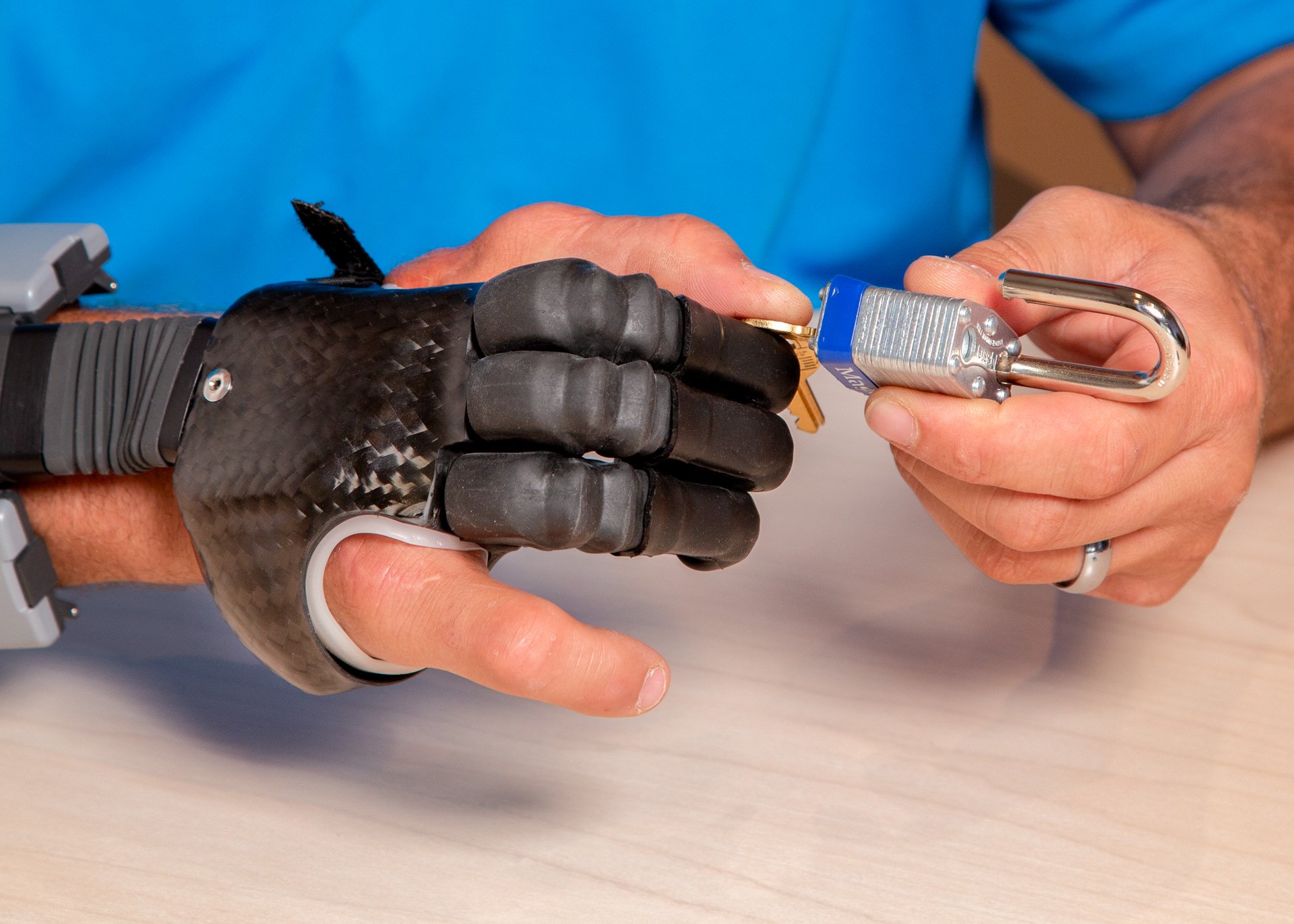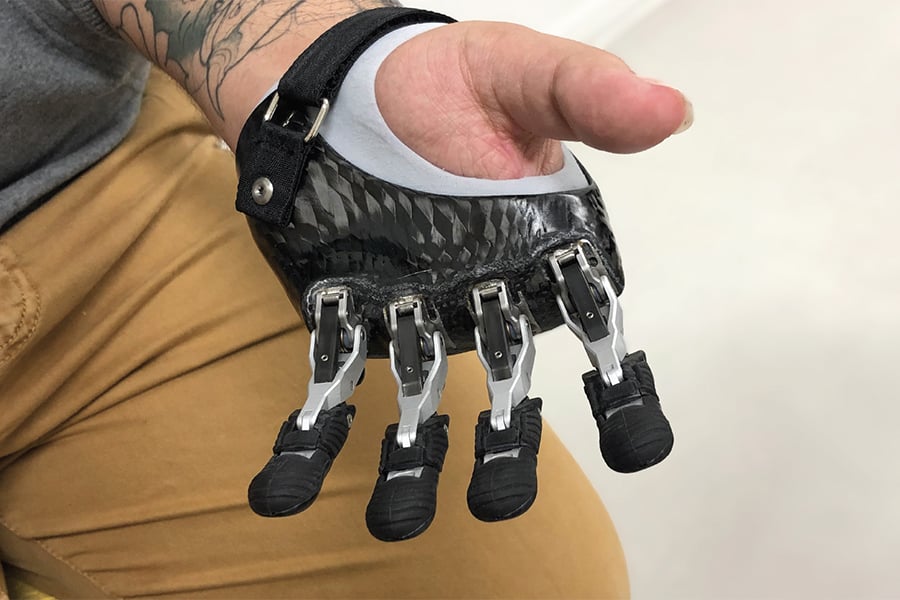We may not be that far away from a “Luke Skywalker”-type hand, like the one that’s seen at the end of “The Empire Strikes Back.” In that end-scene (spoiler alert), we see Luke with a fully functional bionic hand that has a skin-like cover — meaning it’s virtually undetectable from a human hand. But unfortunately, for now, that technology only exists in science fiction.
What is available now are multi-articulating myoelectric hands with grasp patterns that are quite similar to the human hand. Additionally, passive silicone restorations are available. These are passive prosthetic hands that are custom painted to look just like a human hand, with matching skin tone, natural skin creases, body hair and veins (the image on the left at the beginning of this article is a passive silicone restoration). Another option is single-motor myoelectric hands, picture below, with natural looking skin-tone covers that, at a glance, look like a real hand, and it also opens and closes.
The combination of a multi-articulating myoelectric hand with a silicone restoration cover is where the technology is headed, but we’re not there yet. Part of the reason for that is that the different grips or movements of multi-articulating hands cause cracks and tears on the silicone covers.
For people with a partial hand difference, there are many options out there, including multi-articulating myoelectric fingers:
But there isn’t a single-motor myoelectric option with a silicone restoration cover for people with a partial hand difference — at least not yet. Many people with a partial hand difference choose a passive silicone restoration in order to blend in with everyone else. Others require more function and get a passive positional digit, pictured below. Body-powered are another option, along with the myoelectric fingers mentioned above.
We’ve had many patients who were sure about which kind of device they wanted, only to come back a few months later and ask for a different type of component. One of our patients who lost a finger wouldn’t hear of being fit with anything except a passive silicone restoration — she was sure that people were looking at her missing finger. At a follow-up visit to her local center, she decided that a body-powered device, in purple, was the way to go. “It’s just me,” she told our Center Patient Coordinator.
Conversely, our patient Abe Baker believed that he needed the toughest prosthetic devices out there. A mechanic by trade, we initially fit Abe with a body-powered hook and a TASKA hand. But after a few months, Abe asked for a passive silicone restoration, pictured below. Why? “When you go through the airport with your TASKA hand, everyone wants to talk to you. And after you tell your story so many times, you’re just, eh — you don’t want to have to keep doing that. I just want to blend in with a crowd.” That’s an understandable request and something many of our patients have experienced.
Essentially, technology is changing all the time — so be open to whatever is new (for instance, TASKA recently came out with the TASKA CX, a smaller hand with updated technology and grip options). While Luke Skywalker-type hands may not be available yet, having more than one prosthesis can give someone with a limb difference a lot more functional options. Abe wears his heavy-duty prostheses to get work done, and switches to his passive silicone restoration when he wants to look just like everyone else.
Want to learn more about what’s available and how it may help you reach your goals? Please contact us. We can set up an appointment for you with our upper limb specialists: our prosthetists who fit each patient with a custom-fit device, and our clinical therapy specialists, who work closely with our patients to help them learn how to use their device. If you’d like to comment on this article, please do so below.









%20President%20and%20Senior%20Clinical%20Director.jpg?width=600&height=600&name=John%20M.%20Miguelez%2c%20CP%2c%20FAAOP(D)%20President%20and%20Senior%20Clinical%20Director.jpg)










Comments (2)